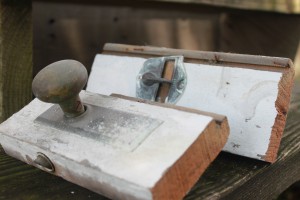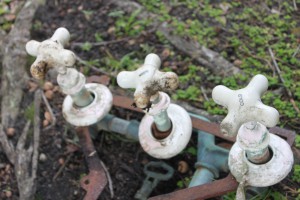BY LESA.LORUSSO ON JANUARY 6, 2013
Sears Kit Homes in La Bertha Lawn Neighborhood of Melbourne, FLorida
Written by Lesa N. Lorusso
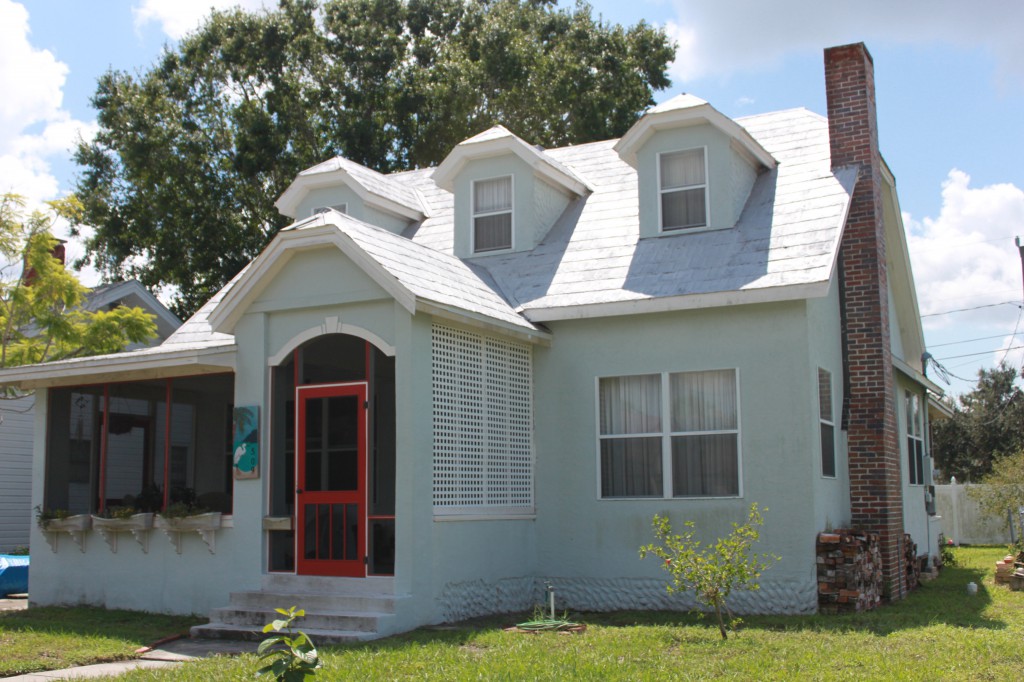 Historically Designated Sears Kit Home in La Bertha Lawn Neighborhood in Melbourne, Florida. Photo by Lesa N. Lorusso
Historically Designated Sears Kit Home in La Bertha Lawn Neighborhood in Melbourne, Florida. Photo by Lesa N. Lorusso
It may seem that planned subdivisions and prefabricated homes were an invention of the 1950’s. Although the cookie cutter technique of community planning proliferated during the mid-century era, the true origins of planned communities in Florida actually predate Twinkies and Spam by several decades.
Florida, in fact, is the location of a few of America’s first fully planned communities. Why Florida? In a 1925 book, “The Truth about Florida”, author Charles Donald Fox explains that the early twentieth century boom in Florida eclipsed all other mass migrations, including the California Gold Rush in 1849 (2). In south Florida, Coral Gables was created in 1925 to include residential and commercial areas all built in the Mediterranean style, and now houses the historic Biltmore Hotel and nine properties listed on the National Register of Historic Places (3). Another planned neighborhood was built during the same time period on the eastern coast of the state in Melbourne, Florida known as the La Bertha Lawn subdivision.
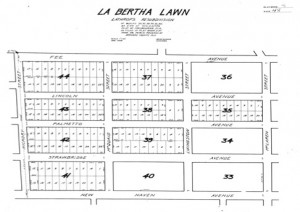
Nestled behind the revitalized Historic Downtown Melbourne district, is the La Bertha Lawn neighborhood. Like Coral Gables near Miami, this area is a planned community built in 1924, just 31 years after Henry Flagler’s Florida East Coast Railway chugged its way into the Sunshine State. Many of the homes in La Bertha Lawn between 1908-1940 were Sears Kit Homes. 1908-1940 were the years that Sears made prefabricated homes that could be selected from a catalogue and purchased, “lock stock and barrel”, ready to be assembled on site. (…and you thought Home Depot and Lowe’s started the DIY revolution?!) The homes were shipped via railroad and contained 10,000-30,000 pieces with framing members marked to facilitate construction (2). Built on Sear’s reputation of quality, low prices and reliability, nearly 75,000 catalog homes were sold between 1908 and 1940 in 48 US states.
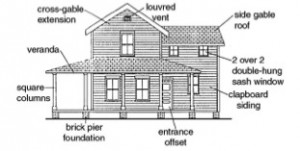
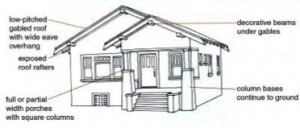 Image Top: Vernacular Sketch, Image Lower: Bungalow Sketch
Image Top: Vernacular Sketch, Image Lower: Bungalow Sketch
In 1991, the State of Florida had 29 homes in the La Bertha neighborhood surveyed. Based on data collected from these surveys, there are over 6 different architectural styles in the community. The most prevalent styles are Frame Vernacular and Craftsman style or Bungalow homes (2). I recently visited a bungalow home within this subdivision on Palmetto Avenue that is proud to be a newly minted, historically designated example of a Sears Kit Home (4).
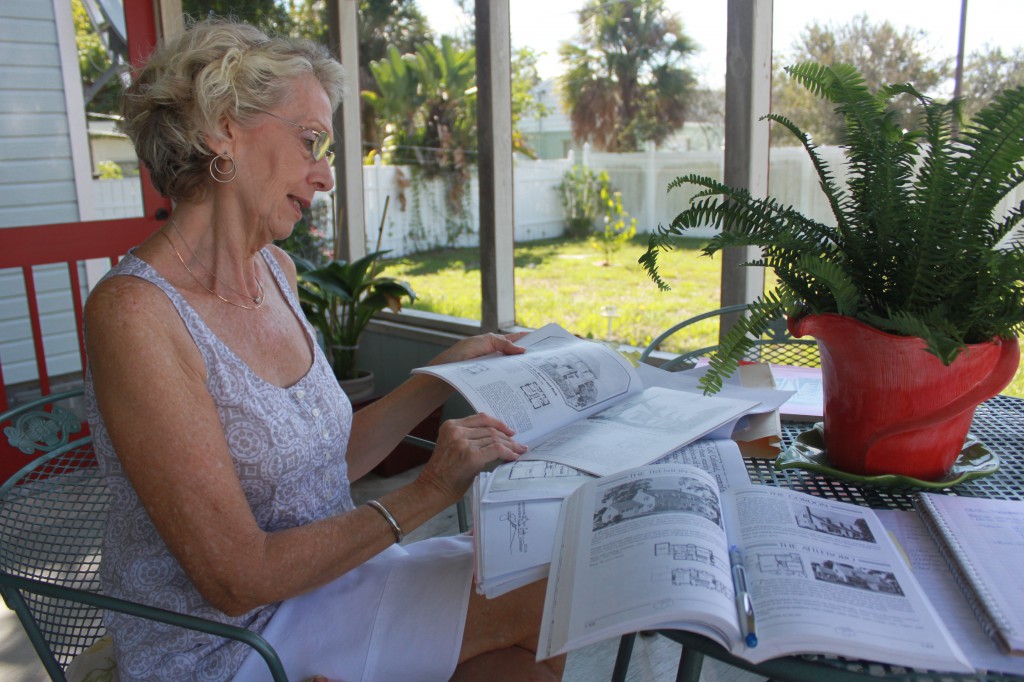 Photo by Lesa N. Lorusso
Photo by Lesa N. Lorusso
The owner of this home, Susan Miller, is an Interior Designer who has lovingly restored her property over the years and is overjoyed with the historic recognition. It was no easy task to obtain the designation proudly displayed on the front of the house that she purchased in 2002. The Sears Company sustained a major fire, which destroyed many records from the first part of the twentieth century. Also, the Sears Kit homes were very customizable making exact matches often difficult to ascertain. Ms. Miller strongly suspected that her bungalow was a Sears Kit Home for several reasons. The neighborhood’s architectural history and the home’s bungalow style were early clues. The deed to the home dates to 1930, and a neighbor insists that the home actually existed before 1930. In any case, this home was built of the style and in the time frame of Sears Kit homes. (Between 1908-1940) Next, the multi story home’s floor plans match very closely to a style known as “The Gordon” found on page 149 in the book Houses By Mail by K. Stevenson and H. Jandl. Lastly, enough of the original architectural features were also still present in the home including doors, hardware and metal roofing that Susan contacted the Melbourne Historic Preservation Board to inquire about her home’s official designation.
Thanks to the significant research efforts of Ed Browder from LittleJohn Engineering the home’s historical significance is now confirmed. This is a significant win for Susan Miller and for others passionate about maintaining historic homes and revitalizing older neighborhoods. As the economic winds shift over time, neighborhoods go in and out of vogue. An area that is now the “it” designation boasting the newest and best homes may be a run-down location in fifty year’s time. Official historic designations are emblems proudly displayed on building façade’s that declare the importance and validity of the structure and encourage others to join in the cause.
1. For more information about Sears Kit Homes visit: www.searsarchives.com
2. Powerpoint Presentation, “Sears Modern Homes in Melbourne Floriday. LittleJohn Engineering Associates. April 17, 2012.
3. http://www.citybeautiful.net/index.aspx?page=324
4. Interview with Susan Miller, Sept 6, 2012
